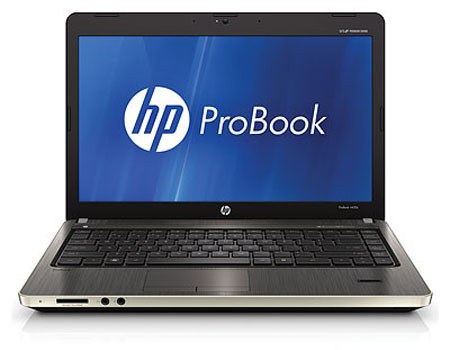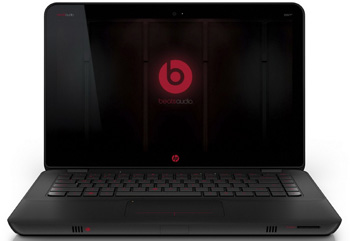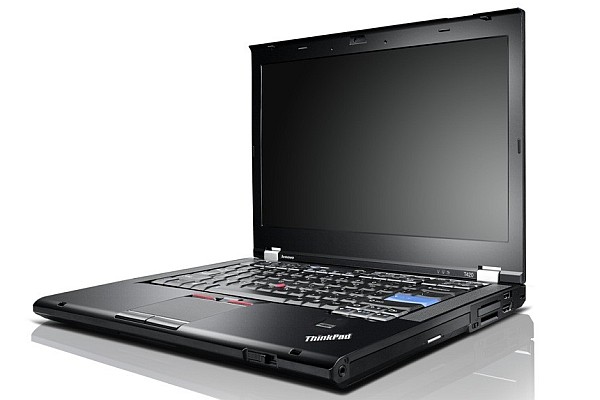Back To School Technology Buyer's Guide
by Zach Throckmorton on August 4, 2011 8:55 PM ESTLaptops
Much like the retail desktops we highlighted on page three of this article, you should expect to be able to find certain specifications in laptops at four price points that are of particular relevance to college students with generalized computing needs. At over $1,000, the laptop market starts to become increasingly niche-specific, and those are not covered here.
Less than $400

Extremely inexpensive laptops are usually not particularly well-built, and often do not feature current-generation processors. Usually, the screens and keyboards are usable but nothing special, and battery life is at best average. However, you can sometimes find the lower end of current-gen CPUs in these budget machines, as is the case with ASUS' A53E-NX1. This 15.6" laptop has an Intel Pentium B940 CPU which operates at 2.0GHz. It does not have Hyper-Threading, so it is a two core, two thread processor. However, it is based on the same Sandy Bridge architecture as the far more powerful Core i3/5/7 CPUs, so even though it's near the bottom of the Sandy Bridge ladder, it's still a very capable productivity processor that yields good battery life. It's a better option than any previous generation AMD or Intel solution you're likely to find at this price range. The laptop's other specifications are unremarkable, though it is nice to see 4GB rather than 2GB of memory. I've seen it as cheap as $350, and at that price, it's a very good value. The comparable 15.6" Toshiba C655-S5235 features a larger hard drive and weighs about 1/3 pound less, so it's another good option at this price point. I recommend these ultra-budget laptops only if you can't afford to spend another $100 or so more...
Less than $500

...Because at $500 or less you can get laptops with Intel Core i3 CPUs in them. Compared to the mobile Sandy Bridge-based Pentiums like the B940 in the above, the Core i3s offer higher clockspeeds, Hyper-Threading, more CPU cache, and better on-die graphics. Stepping up to a Core i3 CPU from a Sandy Bridge Pentium is well worth the $100 or so dollar price increase, even for the most basic computing tasks. Plus, at this price point, you'll usually get better build quality as well. Lenovo's IdeaPad Z560, a 15.6" system, is a good value at $450, and when it's on sale, it becomes a great value. HP's ProBook 4530s (also 15.6") is a nicer machine than the Lenovo, but it's a bit more expensive and comes with only 2GB RAM stock—however, considering how cheap DDR3 is, upgrading to 4GB will cost about $20, and RAM upgrades are the easiest type of upgrade to perform on a laptop.
Approaching $700
As the price tag nears $700, you can start reasonably expecting your laptop to be powerful today and good for more than just productivity even if you don't graduate until spring 2016. Laptops closer to $700 will have large hard drives, more than 4GB memory, and Intel Core i5 CPUs—or AMD A-series APUs. Unlike the less expensive laptops where AMD simply doesn't offer compelling alternatives to the Intel CPUs, AMD's new Llano Fusion APUs are very competitive. To sum things up, the A-series APUs and Core i5 CPUs both yield excellent battery life, the Intel CPUs offer more powerful processing (though the AMD APUs are still more than capable of productivity tasks, and are no slouches when it comes to compute-intense applications like video encoding and photo rendering), and the AMD APUs are far superior in terms of graphics capabilities.
Whether to go Intel or AMD is simple. Which one comes in a better package (i.e. in terms of the machine's other specifications and price), and are you interested in gaming? The answer to the first question is highly variable given how many choices and configurations are available from manufacturers, and is also dependent on pricing. The second question has a definite, invariant answer—if you want to game, get an AMD Llano APU-based system (or look for a laptop with an Intel CPU and NVIDIA Optimus switchable graphics). If you're interested in titles like Battlefield: Bad Company 2, Civilization V, Left 4 Dead 2, Mass Effect 2, Metro 2033, Starcraft 2, etc., then the A8 and A6-series APUs handily best Intel's Core i5 with HD 3000 graphics. Don't be dissuaded by the low clockspeeds of the AMD APUs—there's more to performance than processor frequency!

Lenovo's IdeaPad Z575, Dell's Inspiron 14R, and Samsung's RF711 are good representatives of this price range. The Lenovo features an AMD A6-3400M and the Dell has an Intel Core i5-2410M. Both come with 6GB system memory, large hard drives, and 1333x768 displays. The Dell, however, is a 14" model that weighs almost a pound less than the 15.6" Lenovo. It also features USB 3.0 ports. The Lenovo's hard drive is a bit more capacious. Samsung meanwhile packs an i5-2410M with Optimus GT 540M, which delivers the best of both worlds by giving you the CPU and GPU performance for just about any task, without killing battery life and with a Blu-ray drive; for that, you pay a $20-$30 premium. Deciding between the platforms boils down to personal preferences on support from the manufacturer, aesthetics, and build quality. If you want to game, Samsung will offer the fastest solution followed by the Lenovo, and the Dell is basically only good for very basic titles or older (non-OpenGL) games.
$1,000 or less
Spec-wise, $1,000 laptops rarely offer substantially better day-to-day performance than their $700 or less counterparts. At this price range, most computer users start to encounter diminishing performance returns for increased investment. Rather than offering more capable hardware, manufacturers often turn instead toward improving build quality, and/or offering discrete graphics.

If you are interested in gaming, Lenovo's IdeaPad Y570 and HP's ENVY 14-2050SE are compelling options. The Lenovo's NVIDIA GeForce GT 555M is more powerful than the HP's Radeon HD 6630M, and the Lenovo features an Intel Core i7 quad-core, Hyper-Threading CPU compared to the HP's dual core, Hyper-Threading Intel Core i5. However, the HP is a bit lighter because of its smaller chassis (14" vs 15.6"), and offers substantially better battery life (about an hour or two more of real-world usage)—so it's more mobile.

If you are not interested in gaming, it's difficult to beat the build quality of Lenovo's ThinkPad T-series laptops. The T420 in particular is a favorite amongst the graduate students in my department—an archeologist friend of mine even takes his to the field, where it's subjected to serious punishment and keeps working without issue. ThinkPads have a well-deserved reputation for being about as durable as consumer-grade notebooks come. HP's EliteBook line is also professional-grade, and the 8460p is comparable in most considerations to the Lenovo T420.
Apple's MacBook Pro line of laptops is priced above $1,000, but its least expensive MacBook Air is worth considering at this price range. Anand recently reviewed both current-generation Airs. The 11" model is an ultraportable laptop that's incredibly thin and light, so it's especially appealing to college students who will be walking a lot. Its performance is also more than sufficient for productivity work, and will remain adequate for basic tasks for years. Because it uses an SSD rather than a mechanical hard drive, it's especially snappy. One glaring negative, though, is its small internal storage capacity.
That said, regardless of whether your laptop has a massive 750GB hard drive or 64GB SSD, you don't want all of your files on one disk. The next page covers external storage options.










94 Comments
View All Comments
rageguy34 - Thursday, August 4, 2011 - link
I'm surprised that you would even mention USB keys given how easy they are to lose or an external hard drive seeing as how they can also get lost or have a mechanical failure. Every student should use dropbox or another alternative if not only for cloud storage but for the version history on document saves as wellbrshoemak - Thursday, August 4, 2011 - link
Losing a USB key is not the fault of the hardware. External drives, like anything else can fail. I agree that Dropbox (or like services) should be a part of a student storage plan but other methods of data redundancy are fine. Keep in mind there are times where you need to go to campus computer labs to print certain specialized documents or need color laser prints, most students aren't rocking color lasers in their dorm rooms. Those lab PC's are locked down so you have no way to install Dropbox to get your files - a flash drive is required in those instances, so they can't be totally discounted.zshift - Friday, August 5, 2011 - link
Dropbox has a web interface. I haven't used a flash drive since I created my Dropbox account, and it provides multiple points of backup if you use it on multiple computers. For a student, the spacing limitations shouldn't be too much trouble, especially since referrals net the user extra space. Last I checked, docs, presentations, spreadsheets, and even a few songs or pics here and there don't fill up my Dropbox. I have 2 years worth of material on there, accessible from anywhere I can get an internet connection. Plus, I've lost every flash drive I've ever owned.Zoomer - Friday, August 5, 2011 - link
A flash drive is so much faster than mucking around with some web interface, particularly when the paper is due in -10 minutes.nickb64 - Friday, August 5, 2011 - link
I bought a 16GB USB Key last year because my school blocked the dropbox domain, and I got it on sale on Amazon for $20, which I felt was a pretty good deal, since it was only a dollar more than the 8GB model by the same company.I can access Amazon Cloud Storage from school, but it's a pain in the ass to keep it and Dropbox with the same files in case I need them. Having something in Dropbox is useless if I have to use it in a lab where I don't have access to the Dropbox site.
I just bought a 4-pack of 4GB USB keys because my old 2GB one was too small for my sister's needs, and I can keep various utilities on another in case I need to use them to help someone I know with a computer issue. Also, they were really cheap.
nafhan - Friday, August 5, 2011 - link
Different students are going to have different storage needs. Dropbox will be fine for Word Docs (and has other advantages, as you mentioned), but someone working with large media files will need at least a thumb drive or a mechanical hard drive to get enough space.Procurion - Monday, August 8, 2011 - link
Cloud....meh....I call it pie-in-the-sky. I choose to remain in control of my programs and my privacy, not relenquish it to an unknown group of for profit individuals. Anyone remember Wikileaks???? Nothing on the intenet is "safe".Nataku - Friday, August 5, 2011 - link
no offense, but cloud storage just isn't be all end all solutionthere are plenty of reasons, but to name just a few
- >1GB file download or USB transfer? USB is a hell a lot more faster
- firewall blockage + paranoid IT security will own you when u thought u could download ur powerpoint for the presentation happening in 5 min
- no internet connection --> hey my school kept printing stations off the net so u have to use USB drives
- entering ur username/password on a pub PC that may have keylogger and ur dropbox account having personal stuff, (self video of triple x stuff.. j/k lol)
StormyParis - Thursday, August 4, 2011 - link
As a student, I worked at the Computer Lab. That was back in 5"1/4 floppies day, but the broad 50% of people coming in about lost/corrupted/destroyed data or equipment has stayed about the same.So please kids, do backups. And remember, backups are
- offline, so a virus (or a pissed ex) that wipes your stuff can't get to your backups.
- offsite, so the thief that empties your dorm room nor the idiot that drowns it can get to it
- several, because of murphy's law: your backup will go bad the day your laptop gets stolen.
- tested, because quite often you think you're backuping stuff only to realize that your app does not pout its docs in the user directory.
Also, buy cheap stuff. I know youngsters always need ego-boosters, and branded overskill tech stuff is a nice personnality crutch. Keep in ming though, that it's a waste of money, it's likelier to get stolen, it makes it worse when it's stolen / damaged... and, really, you should try being what you do, not what you own.
techhhhhhy - Thursday, August 4, 2011 - link
I'm sorry, but this was clearly written by someone who doesn't go to college and doesn't know what's right for a campus.There is no way, 0 chance that you can use a desktop on a college campus / dorm. Does it work? Yes but it is absolutely retarded idea.
I could have made this article in 1 page. Get a 15" or less laptop, 13" is ideal. Portability is key in college. If you can afford it get a Macbook because this is what 75% of your classmates will have.